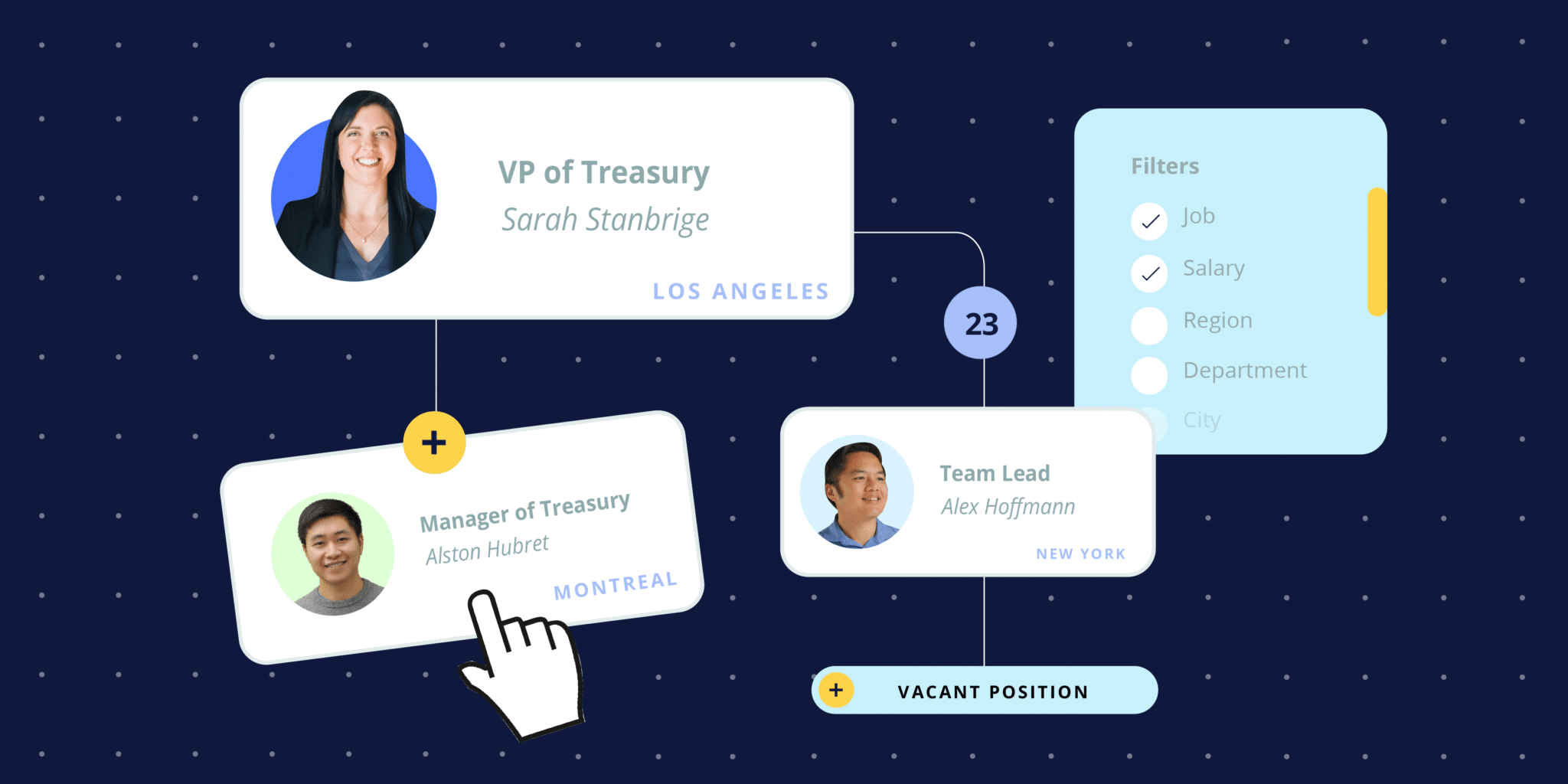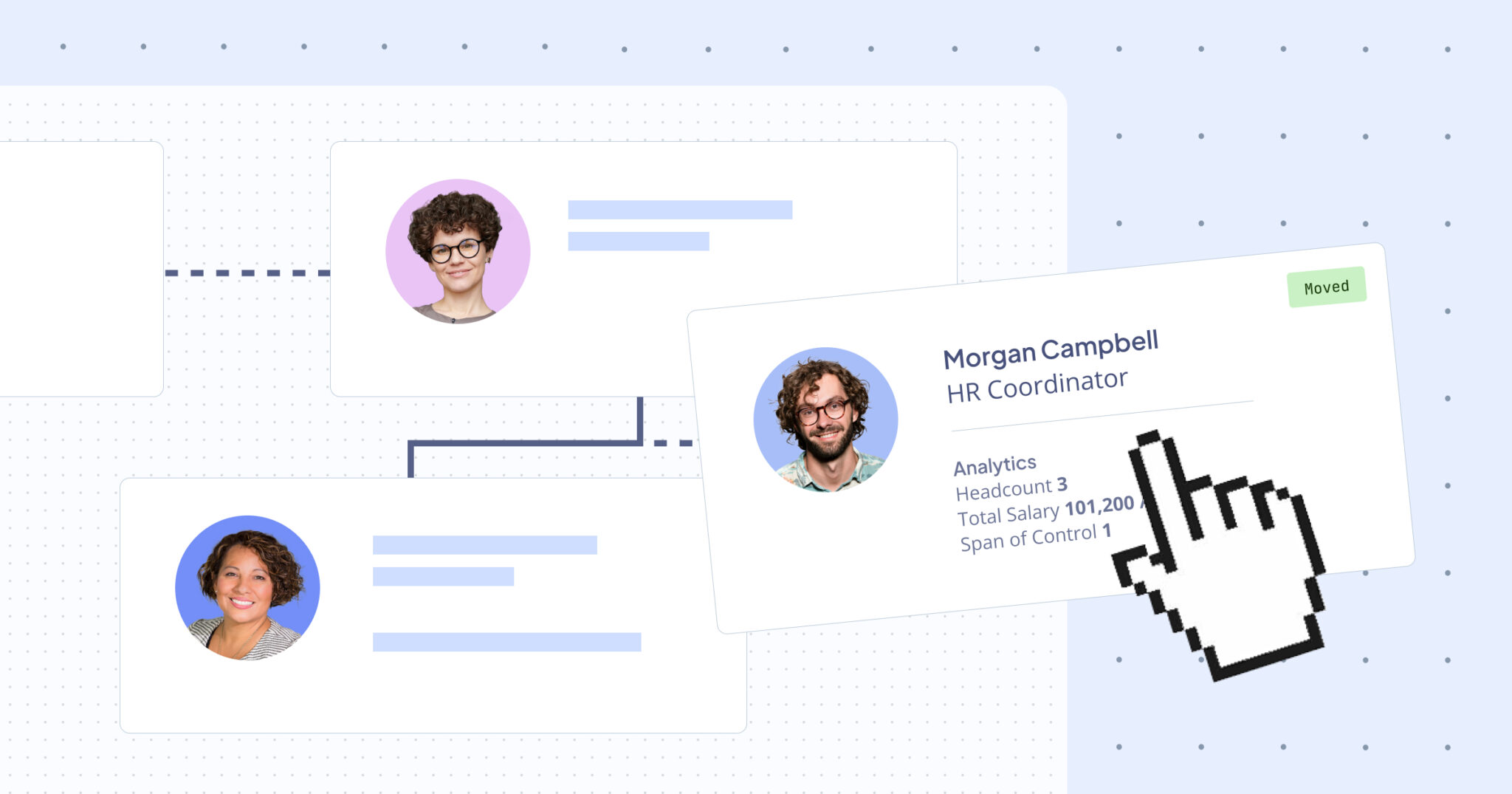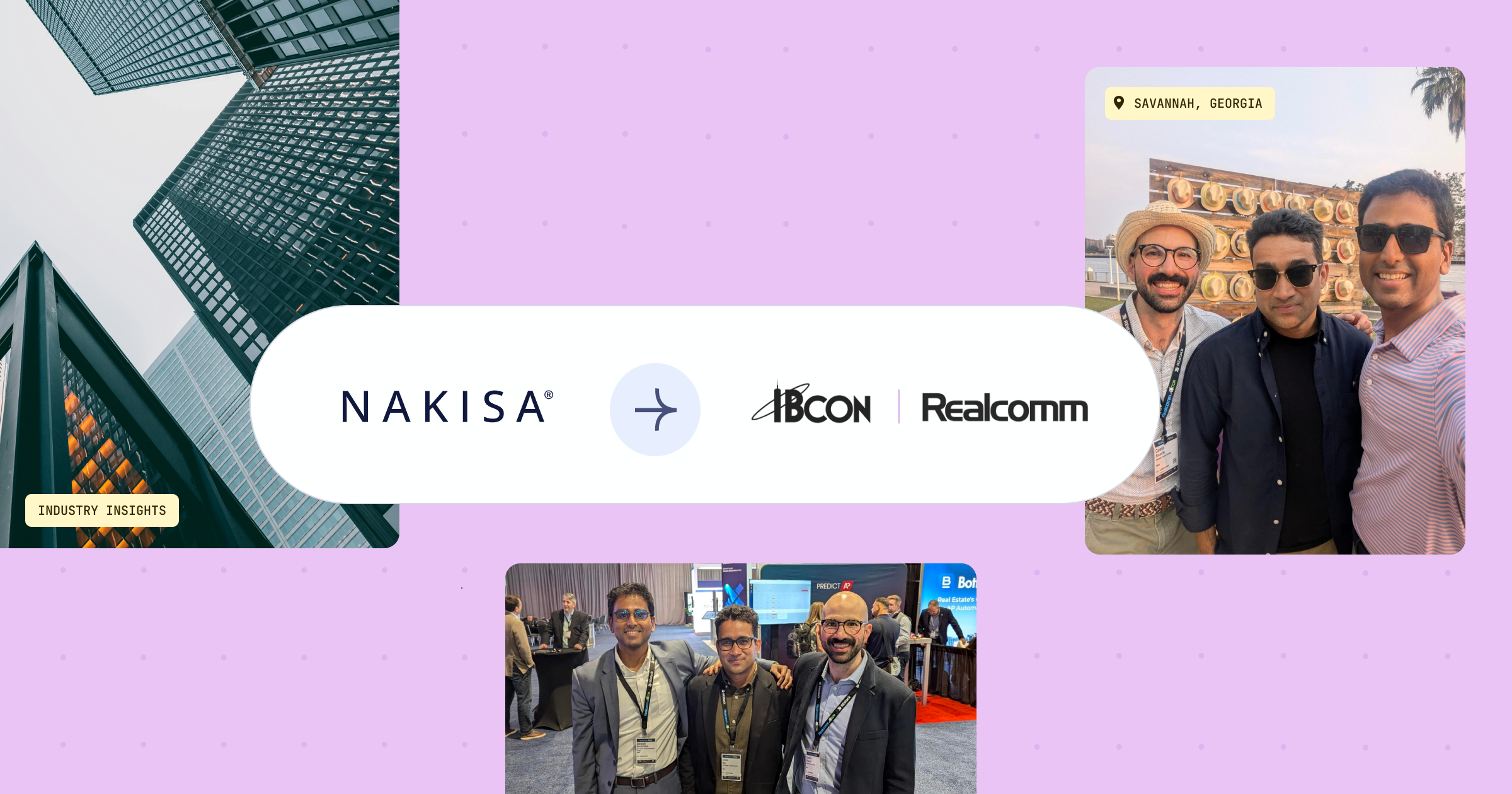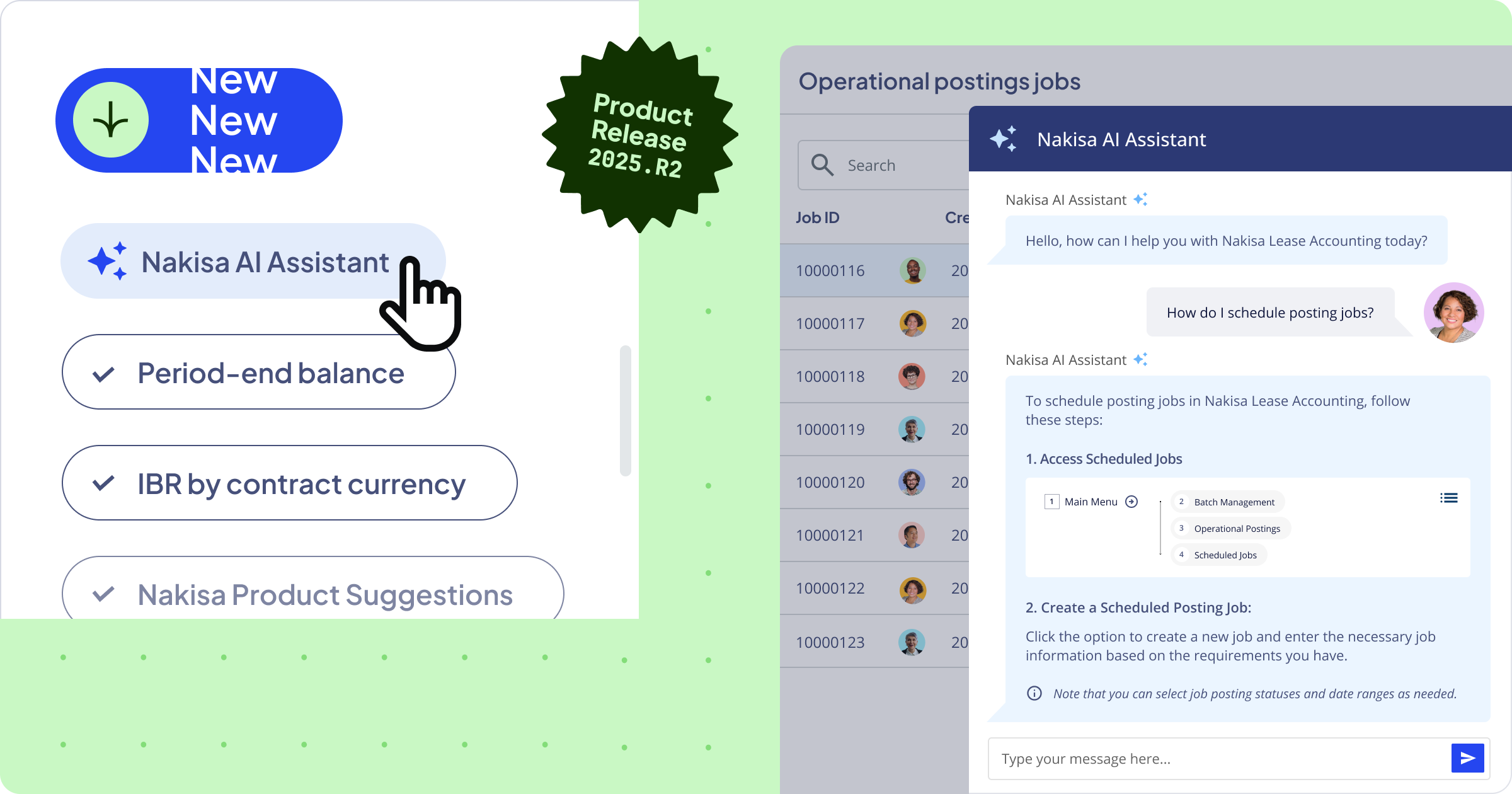When you think of workforce planning, what first comes to mind? Talent sourcing and allocation, probably, or some kind of workforce optimization, and annual budgeting process, headcount forecasts and adjustments due to external influences, changes within the business, or a reorganization.
However, workforce planning is a compound of many different layers—even more so in large enterprises—relating to finance, strategic vision, operational needs, and more. How can HR make sense of all this and make workforce planning drive results for the organization?
In this article, extracted from a recent interview (video below), we’ll delve into the intricacies of workforce planning for large enterprises. We’ll also discuss how HR technology, such as organizational design and visualization software, can make a difference in this process by transforming people analytics and scenario planning into critical insights for the organization.

What are the three different levels of workforce planning?
In the dynamic landscape of organizational management, workforce planning demands a multifaceted approach that’s essential for businesses to harmonize strategic foresight and operational precision. To address this complexity, organizations need to coordinate three different facets of planning: let’s see what they are.
1. Strategic workforce planning: building tomorrow's capabilities today
This forward-thinking approach aligns talent acquisition with long-term business goals, aiming to future-proof the organization. It involves anticipating the talent requirements that will support business objectives in the future say, for the next three to five years. Some of these skills may only be emerging in the talent market as of today, or not expected to be in short supply for some time to come.
Strategic workforce planning involves proactively exploring the organization's existing talent and identifying external options, such as contractors, consultants, and outsourcing. At this level, you need to answer some essential questions, like:
- What new capabilities will we need in the future to achieve our strategic goals?
- Where does the talent exist today?
- How much of that talent is already with us?
- Where exactly can I source those capabilities and talent in the market?
This kind of headcount planning is crucial for enabling strategic objectives, including diversification, mergers and acquisitions, or changes in business models, like transitioning from a brick-and-mortar retail to an online operation.
2. Headcount planning: bringing HR and Finance closer together
Here are the most common business-related challenges in organizational design:
This second layer of workforce planning is closely tied to the organization's financial health. Operational headcount planning is a collaborative effort between finance and HR, synchronizing talent needs with financial allocations, all driven by the company’s yearly budgeting process.
Managers across the organization play a pivotal role in this process, outlining their talent needs over a specified timeframe, typically one to three years (since projecting headcount further than that, in most cases, risks going into crystal-ball territory). The insights gathered from this process inform the organization’s overall financial budgeting decisions that take place periodically.
3. Operational workforce planning: scheduling for day-to-day excellence
This final layer concerns the day-to-day (or week-to-week) workforce optimization within specific operational needs. Workforce scheduling focuses on preparing talent to perform repeatable tasks or respond dynamically to customer demand fluctuations, but also staffing internal projects.
Whether managing shift work or ensuring key talent is available during peak times, this level of planning is crucial for maintaining efficiency. This is most relevant in healthcare, manufacturing, and retail industries, where shifts and customer activity dictate talent allocation.
What are the main workforce planning challenges for large enterprises?
Large enterprises face a unique set of challenges when doing workforce planning, forcing them to find a delicate balance between strategic vision and operational priorities. Two hurdles are the most common, so let’s examine them in detail.
Workforce Planning Challenge #1: Engaging managers
One of the primary challenges lies in engaging operational management, that is, those outside HR and Finance. In some cases, the workforce planning process can turn into a negotiation arena in which managers—aware they have to negotiate with Finance or HR anyway—may inflate their initial requests, so if they “settle” for a reduction, they’ll get what they truly desire.
This choreography can lead to a distorted representation of workforce needs, with requests shaped more by negotiation tactics than genuine organizational requirements. To mitigate this, operational management should be involved in the process, ensuring a more accurate, holistic understanding of departmental needs and fostering collaboration and transparency.
Workforce Planning Challenge #2: Seeing the organization as a whole
The second challenge is encouraging management to “see the forest for the trees” in workforce planning. That is, rather than adopting a bottom-up approach based on estimating position by position, the focus should shift toward envisioning the organization's overall structure.
The key lies in a paradigm shift—moving from a transactional process of plugging in numbers and salaries to a strategic one that contemplates the organizational architecture. You need to ask some questions, like: What does the organization need to look like to achieve its objectives? Can we do it with the current structure, or does it require recalibration? Once this broader vision is established, the numbers follow more organically, aligning with the envisioned structure.
How can workforce planning software help organizations?
As organizations deal with the intricacies of aligning talent demands with financial constraints, the role of technology—workforce planning software in particular—becomes pivotal. The tools at our disposal have undergone remarkable transformations, with integrated solutions taking center stage, particularly for large enterprises.
While some clients still rely on Excel-based tools that cascade through management layers before integrating into ERPs and financial planning tools, the tide is shifting towards more advanced, iterative workforce planning processes, incorporating visuals and workforce analytics into the framework.
These tools also enable organizations to simulate various workforce scenarios preemptively. Through visualization, stakeholders can gain insights into potential challenges and opportunities before decisions flow down the organizational hierarchy.
This iterative approach allows organizations to model their talent needs, conduct thorough analyses, and address questions like: What are the associated costs? Will it create gaps elsewhere? Is the plan realistic and comparable across different departments? It also minimizes the need for constant revisions and realignments, saving time and resources.
Those workforce planning software go beyond the limitations of traditional systems based on static data, offering a seamless and comprehensive platform that streamlines the planning process. As organizations face the complex task of aligning talent needs with strategic and financial objectives, integrated workforce planning solutions are indispensable allies.
Check out our ultimate guide to selecting workforce planning and organizational design software — including our trusted RFP vendor scorecard!
Using HR software for organizational scenario planning
In the wake of the recent (or imminent) market turbulence, exercises in business continuity, risk management, and crisis management have become more and more relevant. This awareness underscores the critical need for org scenario simulation, especially for headcount planning.
Typically, organizations select macro scenarios, anticipating potential events or their recurrence, and engage in simulations to gauge the impact on headcount and the overall structure. This process often involves org chart visualization tools or organizational design software to simulate “what-if” scenarios, with insights into potential outcomes for both the headcount and the organization. Based on these simulations, actionable plans are formulated and maintained, patiently waiting on a shelf until the identified risks materialize.
Many tools are available to facilitate these simulations, ensuring they remain dynamic and relevant. This should be an ongoing preparatory exercise to fortify organizations against external events that lie beyond their control but can greatly influence how they organize talent.
What are the six key metrics for measuring workforce planning success?
Ensuring success in workforce planning requires balancing fiscal responsibility, strategic objectives, talent alignment, and resilience for unforeseen events. To measure this, the metrics we use can be tangible or intangible—in either case, their actual impact can be immense.
Here are the three pillars of the Nakisa Workforce Planning that will totally transform your HR work:
- Financial and strategic alignment - A well-executed workforce planning process allows an organization to achieve fiscal responsibility regarding headcount while effectively serving the strategic objectives. This involves anticipating talent needs, ensuring business continuity, and maintaining a prudent buffer for unexpected events.
- Organizational and individual performance: A key success indicator is the increased performance at the collective and individual levels. Success is measured by assessing whether people meet their objectives, are positioned appropriately, and express job satisfaction, reflecting the foresight embedded in the planning process.
- Productivity - A well-planned workforce is a productive workforce. When your planning is successful, your efforts in workforce optimization result in less wasted energy (to the possible measurable extent) and ensure every individual is fully productive in their role.
- Employer brand enhancement - A shorter time to hire indicates a compelling narrative around individuals being in the right roles and the promotion and support of inspirational leaders. This enhances the organization's employer brand and reflects adept planning and execution.
- Communication and trust-building - An intangible yet critical indicator is the ability to communicate the organization's structure and workforce plan to employees. Explaining roles, responsibilities, and accountabilities fosters better collaboration and transparency and elevates the workforce’s trust in the leadership.
- Employee engagement - Increased engagement is a testament to effective workforce planning. When employees find themselves in roles that align with their skills and aspirations, it means that the organization has successfully identified and deployed the right talent to the right places, naturally leading to higher proactivity and involvement.
Choosing the best HR software for your workforce planning
As we’ve seen, success in workforce planning transcends mere numerical metrics like financial acumen or productivity. It also encompasses more intangible gains, such as engagement and transparent communication. But to get there, you must use an HR tool that gives you total flexibility and visibility into your organization.
Enter the Nakisa Workforce Planning. This is your go-to workforce planning software, providing you with capabilities that go from daily operations support—like routine talent assessments—to aiding in the strategic aspects of long-term organizational design. Here’s what Nakisa can do for you:
- Organization visualization and analytics - With Nakisa’s workforce analytics, deep-dive visualization, org charts, and reporting capabilities, you’ll make better sense of your organization.
- Organizational design - Create and compare as many what-if scenarios as needed to determine the best way to modernize your organizational design and build your organization’s future state. Predicting the outcomes and impacts of reorganizations is simplified by proprietary problem detection and root cause analysis functions. You can then write back your chosen scenario to your core ERP, HCM, and HRIS systems to speed up implementation.
- Strategic workforce planning and headcount planning - Utilize intuitive tools and advanced analytics to optimize staffing levels, bridge skill gaps, and align headcount planning with your strategic objectives.
Want to learn more about how Nakisa can make a difference in real life? Check out this case study about how Allied Irish Banks (AIB) benefitted from Nakisa’s org design, org chart, and workforce planning capabilities to drive results.
With the Nakisa Workforce Planning, you’ll have the best solution to navigate your organization’s evolving landscape and prepare for future challenges. And if you want to learn more about our product, get in touch with one of our experts and get a free demo!






